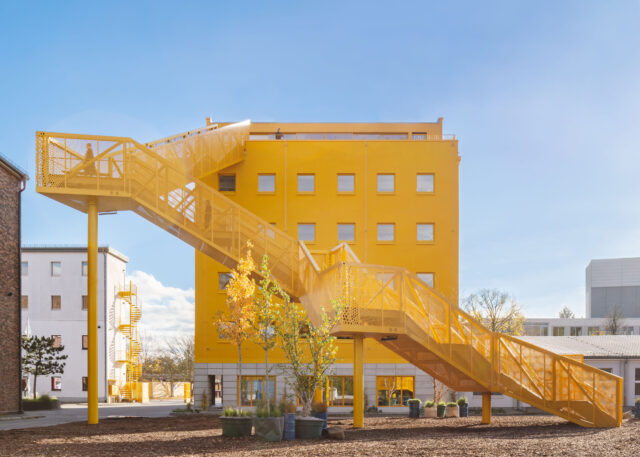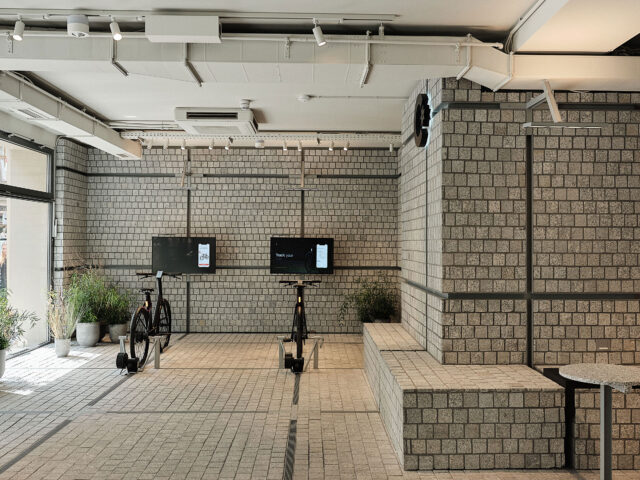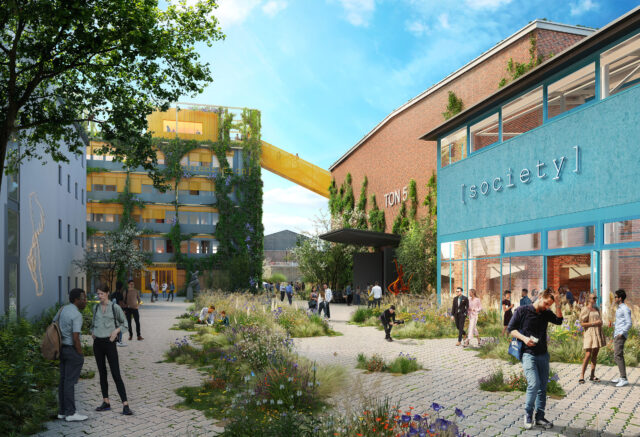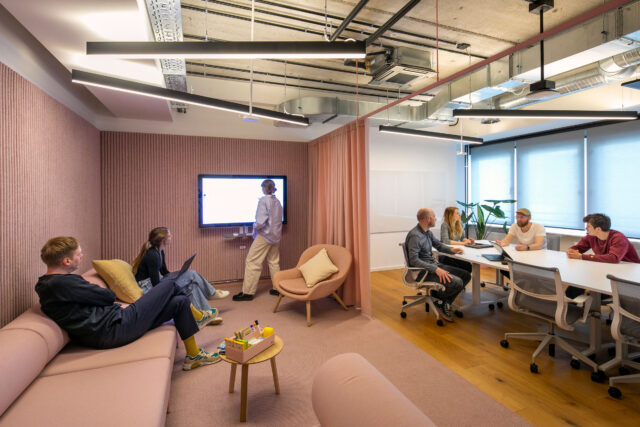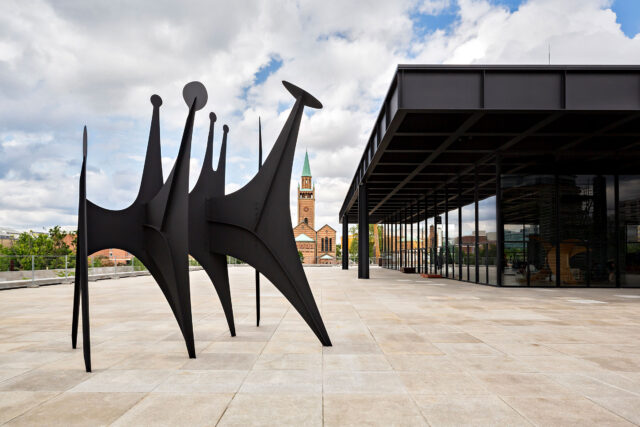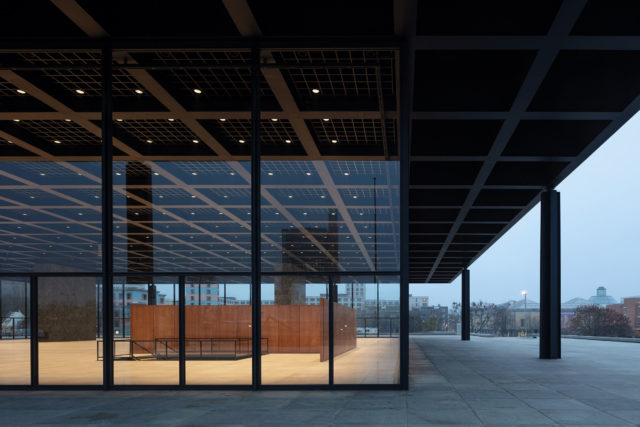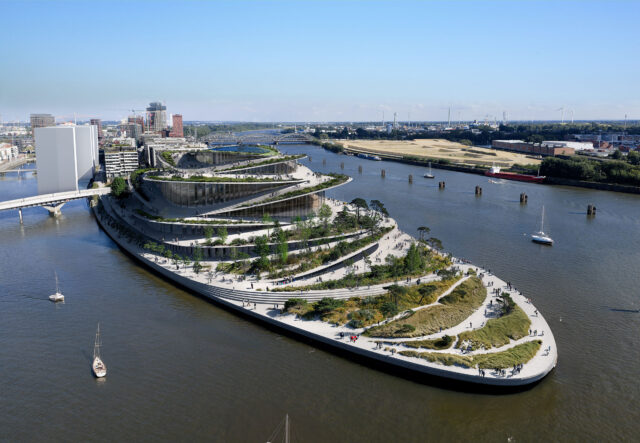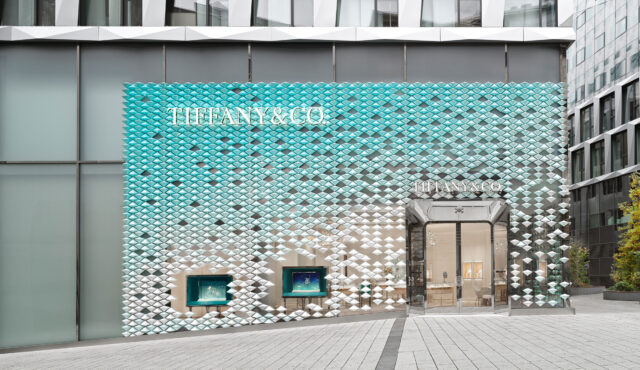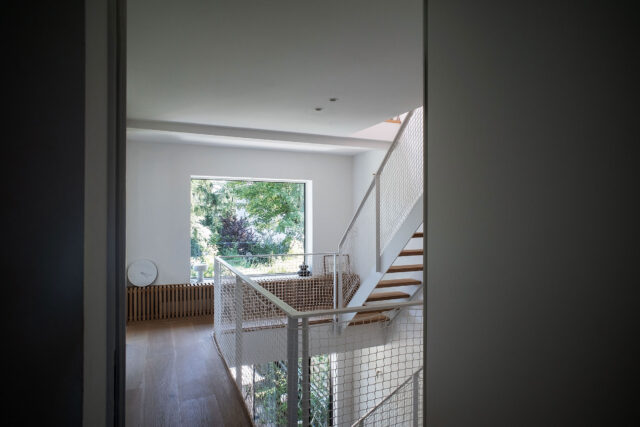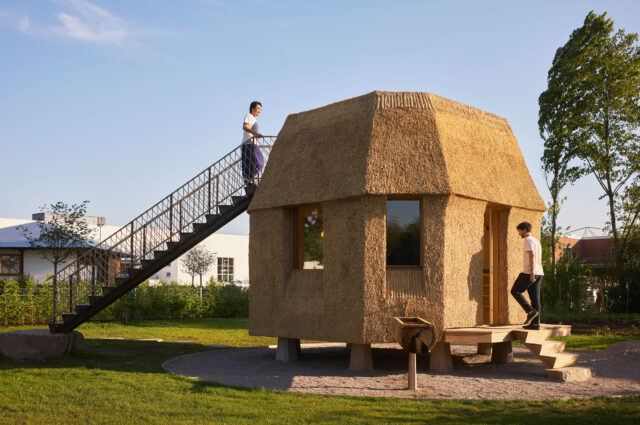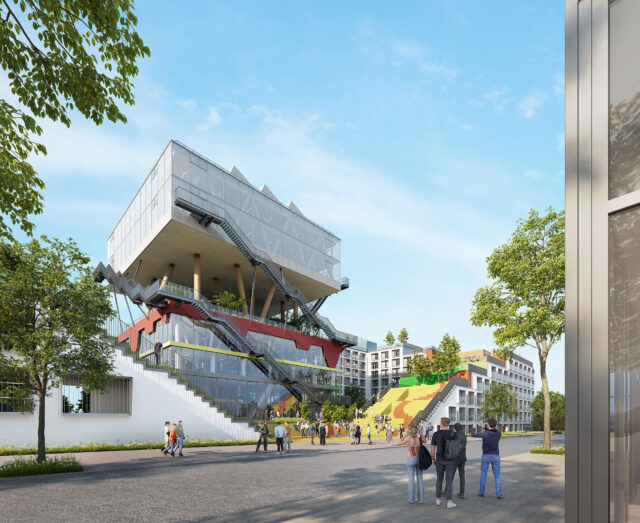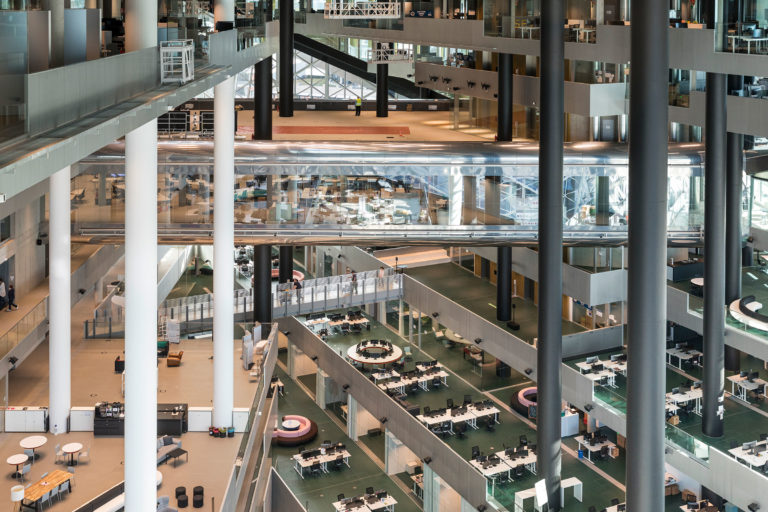
SHARE OMAの設計で完成した、ドイツ・ベルリンの、メディア企業 アクセル・シュプリンガー社の新社屋「Axel Springer Media Campus」。中央に設けられたヴォイドに位置するワークスペースが社全体にアイデアを伝えることを意図




OMA / レム・コールハース+クリス・ヴァン・ドゥイン(Chris van Duijn)の設計で完成した、ドイツ・ベルリンの、メディア企業 アクセル・シュプリンガー社の新社屋「Axel Springer Media Campus」です・
アクセル・シュプリンガーの新社屋は、印刷からデジタルメディアへの移行を開始した同企業の象徴であり、ツールとしての役割を果たすのだそう。デザインのエッセンスとしては、一連の段々畑のようなフロアが「谷」を形成し、中心に非公式なステージを作り出すことにあり、それは、会社の他の部分にも、そのアイデアを伝える場所としても機能するとの事。
タバコを吸いタイピングをするジャーナリストが支配する古典的なニュースルームでは、同僚の労働と進歩そして集団的な目標を意識していたけれど(1つの問題、締め切りが同時リリースである。)、デジタルオフィスでは、画面をじっと見つめていると、他のすべての注意力が低下し、真のイノベーションに必要な集合的な知性が損なわれてしまうとOMAは考え、個人の仕事を贅沢にも放送して共有分析を行うビルを設計したのだそう。具体的には新しいオフィスブロックが既存のアクセルシュプリンガーの建物に開く中央のアトリウムに配置されるように設計されています。
以下の写真はクリックで拡大します


















以下、建築家によるテキストです。
Axel Springer has launched a move from print to digital media. Its new building on the campus in Berlin acts both as a symbol and a tool in this transition – a building to lure the elite of (Germany’s) digital Bohemia. Bisected by a diagonal atrium that opens up to the existing Axel Springer buildings, the essence of the design is a series of terraced floors that together form a ‘valley’ that creates an informal stage at the centre – a place to broadcast ideas to other parts of the company.
The genius of print is that it is a cheap, physical, hyper-accessible embodiment of a complex collective effort, for which so far the digital has been unable to find an equivalent. Architectural offices are similar to newspapers in that they produce complex assemblies and selections from radically different sources of information.
As architects, we have experienced the advantages: speed, precision, smoothness. But we have also suffered one crucial consequence: the relationship between the worker and his computer, which isolates him in a bubble of introverted performance, inaccessible to collective overview.
In the classical newsroom, dominated by smoking, typing journalists, each inhabitant was aware of the labour and progress of his colleagues and of the collective aim: a single issue, with the deadline as a simultaneous release. In the digital office, staring intently at a screen dampens all other forms of attention and therefore undermines the collective intelligence necessary for true innovation.
We therefore have designed a building that lavishly broadcasts the work of individuals for shared analysis. The new office block is injected with a central atrium that opens up to the existing Axel Springer buildings – a new centre of the Axel Springer campus.
The design was developed around a series of terraced floors that together form a digital valley. Each floor contains a covered part as a traditional work environment, which is then uncovered on the terraces. Halfway through the building, the valley is mirrored to generate a three dimensional canopy.
The common space formed by the interconnected terraces offers an alternative to the formal office space in the solid part of the building, allowing for an unprecedented expansion of the vocabulary of workspaces: a building that can absorb all the question marks of the digital future.
The public can experience the building on three levels – ground floor lobby, meeting bridge, and roof-top bar. The meeting bridge is a viewing platform from which the visitors can witness the daily functioning of the company and how it evolves. The ground floor contains studios, event and exhibition spaces, canteens and restaurants.
The building is situated opposite the existing Axel Springer headquarters on Zimmerstrasse, a street which previously separated East and West Berlin, at one of the city’s most significant locations.
■建築概要
Axel Springer Campus, Berlin, Germany
Status: Completed
Client: Axel Springer SE
Location: Berlin
Site: Zimmerstrasse
Program: Total: 57 828 m2 (above ground); 14 731 m2 (below ground): Offices: 43,534 m2, public areas (lobbies, restaurants, event spaces and meeting facilities): 8,200 m2, technical areas: 6,686 m2; parking: 11 300 m2
Partners in charge: Rem Koolhaas, Chris van Duijn
Associate in charge: Katrin Betschinger
Team: Philippe Braun, Antonio Barone, Paolo Caracini,Alain Fouraux, Gary Owen, Maria Aller Rey, Wael Sleiman
Valentin Bansac, Matthieu Boustany, Saida Bruckner, Felix Buttner, Emile Estourgie, Michalis Hadjistyllis, Phelan Heinsohn, Cindy Hwang, Mattia Inselvini, Athanasios Ikonomou, Hanna Jankowska, Minkoo Kang, Alexander Klufers, Tijmen Klone, Marina Kouvani, Maximilian Kurten, Hans Larsson, Wai Yiu Man, Cristina Martin de Juan, Julian Meisen, Martin Murrenhoff, Betty Ng, Edward Nicholson, Vitor Manuel Dos Santos Oliveira, Ebrahim Olia, Jerome Picard, Danny Rigter, Joanna Rozbroj, Stefanos Roimpas, Jad Semaan, Lukasz Skalec, Sandra Sinka, Thomas Shadbolt, Magdalena Stanescu, Mike Yin, Marcus Parviainen, Slavis Poczebutas, Alexandru Vilcu,Frederike Werner, Mateusz Wojcieszek
———
Collaborators
Project Management: SMV Bauprojektsteuerung Ingenieurgesellschaft mbH
Cost Management: Emproc GmbH
MEP: ZWP Ingenieur-AG
Façade: Emmer Pfenninger Partner AG
Landscape: Inside Outside
Structure: Arup London
Elevators: Lerch & Bates
Energy/Comfort: Transsolar Energietechnik GmbH
Building Physics: knp.Bauphysik GmbH
Acoustics: Kahle Acoustics
Geotechnical: GuD Geotechnik und Dynamik Consult GmbH
Lighting: les éclaireurs
Orientation System Büro Uebele
Curtain design Inside Outside
Contractors
Main contractor: Ed. Züblin AG
Façade contractor: Dobler-Metallbau, GIG Fassaden
Furniture Unifor, Lensvelt

